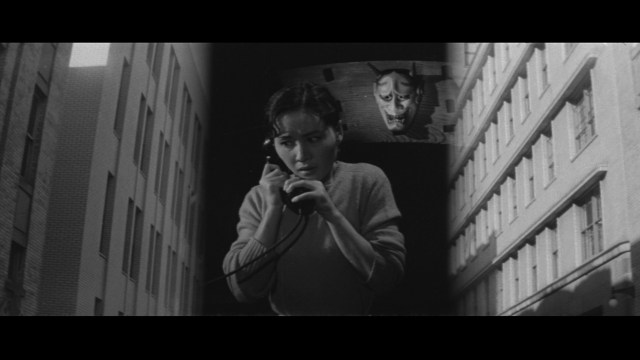Watching foreign language films as an English speaker, you’re necessarily limited by the availability of films that have been translated and released in your local region.  That means the quality and availability of Japanese films with English language subtitles (ignoring for a moment the often very fine work of fansubbers) is not necessarily representative of the quality or breadth of Japanese cinema in general. This is even more true when looking back at older films; while a contemporary film might at least get a limited release in the West, older films by lesser known directors or even by well-respected auteurs can be difficult to find. Even Akira Kurosawa’s outsized shadow over Japanese cinema doesn’t mean it’s possible to find all his films on DVD, let alone restored on Blu-ray. That’s why I’m so thrilled to have outfits like Arrow Video, Masters of Cinema, and the Criterion Collection that put out restored copies of both classic and obscure films. Arrow, in particular, deserves commendation for being much broader in what it will publish; it’s not that every lesser-known work is a forgotten classic, but it would be a real shame to lose these titles forever.
That means the quality and availability of Japanese films with English language subtitles (ignoring for a moment the often very fine work of fansubbers) is not necessarily representative of the quality or breadth of Japanese cinema in general. This is even more true when looking back at older films; while a contemporary film might at least get a limited release in the West, older films by lesser known directors or even by well-respected auteurs can be difficult to find. Even Akira Kurosawa’s outsized shadow over Japanese cinema doesn’t mean it’s possible to find all his films on DVD, let alone restored on Blu-ray. That’s why I’m so thrilled to have outfits like Arrow Video, Masters of Cinema, and the Criterion Collection that put out restored copies of both classic and obscure films. Arrow, in particular, deserves commendation for being much broader in what it will publish; it’s not that every lesser-known work is a forgotten classic, but it would be a real shame to lose these titles forever.
All that is a long preamble to introducing Arrow Video’s “Nikkatsu Diamond Guys” series. With two volumes so far, that’s six lesser known works from some cult directors that might not otherwise see the light of day again. Let’s start with Seijun Suzuki’s Voice Without a Shadow (1958).
In Arrow’s own words, “Nikkatsu, the oldest film studio in Japan, inaugurated a star system in the late 1950s, finding talent and contracting to their Diamond Line for a series of wild genre pictures.” Seijun Suzuki is perhaps an ironic choice to lead this collection – after a series of films that “make no sense and make no money”, Nikkatsu fired Suzuki. Voice Without a Shadow, however, is a much more conventional crime thriller, closer to a standard episode of a modern police procedural than the baffling, avant garde Branded to Kill.

That’s not meant to be a knock against Voice Without a Shadow, though. It’s kind of fascinating to consider the film in context, in an era where film would fill the role of television. It very much is the police procedural of its time. The plot concerns two, connected murders; first, the titular ‘voice without a shadow’ who is overheard by a telephone operator committing a murder in a pawn shop, then later, another murder that the telephone operator’s husband catches the blame for. How the murders are linked, who committed what, and how it’s all solved plays out with the involvement of the police and journalists investigating the crimes.

It’s not especially ground-breaking, at least to a modern eye, and I was particularly grateful when at the climax of the film the journalist took the time to explain all the events and actually make sense of everything, as I was getting quite lost – everything seems to pan out without plot holes, but I certainly didn’t figure it out beforehand. Suzuki livens up a fairly standard story with some interesting photography, a reminder that he would one day be fired for being too experimental. Watch out for the repeated motif of masks hanging in the background when characters are talking on the phone.
Overall, it’s a crime story with a strong hook and interesting, almost Hitchcockian visuals, even if it gets bogged down with procedural wranglings and forced confessions and other things you’d expect to find more in an episode of Law & Order than a classic thriller. As the first taste of Nikkatsu’s Diamond Line, it’s a success.
Voice Without a Shadow / 影なき声 (Kagenaki koe)
Director: Seijun Suzuki
Japanese Release Date: 22nd October 1958
Version Watched: 92 min, Arrow Video “Nikkatsu Diamond Guys, vol. 1” Release
